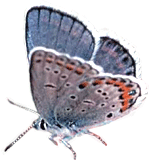NH Science Standards
Grades 3-4
S:LS1:4:3.2 Recognize that living organisms have life cycles, which include birth, growth and development, reproduction, and death; and explain how these life cycles vary for different organisms. S:LS2:4:1.1 Describe how the nature of an organism’s environment, such as the availability of a food source, the quantity and variety of other species present, and the physical characteristics of the environment affect the organism’s patterns of behavior. S:LS2:4:1.2 Describe the interaction of living organisms with nonliving things. S:LS2:4:3.1 Recognize that plants and animals interact with one another in various ways besides providing food, such as seed dispersal or pollination. S:LS2:4:3.2 Describe ways plants and animals depend on each other (e.g., shelter, nesting, food). [LS2(K-4)SAE-6] S:LS3:4:1.1 Provide examples of how environmental changes can cause different effects on different organisms. S:LS3:4:1.3 Using information (data or scenario), explain how changes in the environment can cause organisms to respond (e.g., survive there and reproduce, move away, die). [LS3(K-4)SAE-7] S:LS3:4:3.1 Recognize that individuals of the same species differ in their characteristics; and explain that sometimes these differences give individuals an advantage in survival and reproduction. S:LS3:4:3.2 Recognize that for any particular environment, some kinds of animals and plants survive well, some less well, and some cannot survive at all. Grades 5-6S:LS1:6:3.3 Explain that all living things reproduce in order to continue their species. S:LS2:6:1.1 Identify and describe the factors that influence the number and kinds of organisms an ecosystem can support, including the resources that are available, the differences in temperature, the composition of the soil, any disease, the threat of predators, and competition from other organisms. S:LS3:6:1.1 Provide examples of how all organisms, including humans, impact their environment; and explain how some changes can be detrimental to other organisms. S:LS3:6:1.2 Explain how changes in environmental conditions can affect the survival of individual organisms and the entire species. S:LS3:6:3.1 Recognize that there are genetic variations among individuals in groups of organisms and provide examples of how these variations affect the survival of an organism.
|

 S:LS1:4:2.3 Identify and explain how the physical structures of an organism (plants or animals) allow it to survive in its habitat/environment (e.g., roots for water; nose to smell fire). [LS1(K-4)FAF-4]
S:LS1:4:2.3 Identify and explain how the physical structures of an organism (plants or animals) allow it to survive in its habitat/environment (e.g., roots for water; nose to smell fire). [LS1(K-4)FAF-4]